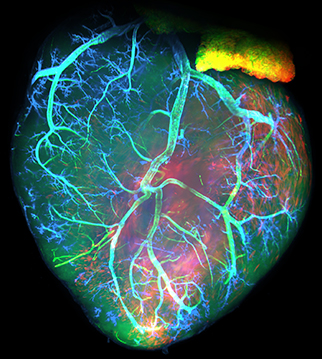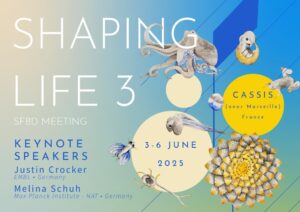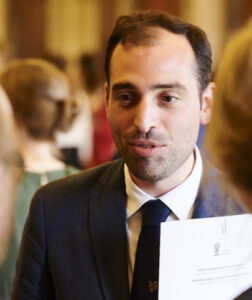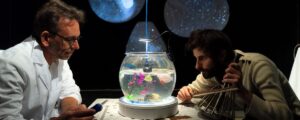Unlike the adult heart, the heart of a newborn mouse is capable of regenerating following a myocardial infarction caused by ligation of the left coronary artery. Using heart transparentization techniques, light-sheet imaging and 3D reconstruction of these images, Rachel Sturny, engineer in the team, showed the presence of collaterals that form bridges between the healthy coronary arteries and the damaged one. These collaterals do not persist over time and allow reperfusion of the infarcted zone irrigated by the damaged artery, whereas non-functional collaterals also develop in hearts that do not regenerate. Genetic tracing analyses and follow-up of the hearts during regeneration show that these collaterals allow the restoration of a functional coronary artery two weeks after ligation.
This study contributes to our understanding of the mechanisms of cardiac regeneration and is now published in JMCC.




